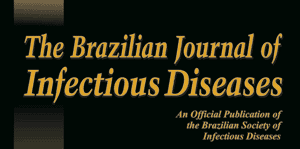Abstract
Objectives
Differential diagnosis of COVID-19 includes a broad range of conditions. Prioritizing containment efforts, protective personal equipment and testing can be challenging. Our aim was to develop a tool to identify patients with higher probability of COVID-19 diagnosis at admission.
Methods
This cross-sectional study analyzed data from 100 patients admitted with suspected COVID-19. Predictive models of COVID-19 diagnosis were performed based on radiology, clinical and laboratory findings; bootstrapping was performed in order to account for overfitting.
Results
A total of 29% of patients tested positive for SARS-CoV-2. Variables associated with COVID-19 diagnosis in multivariate analysis were leukocyte count ≤7.7 × 103 mm–3, LDH >273 U/L, and chest radiographic abnormality. A predictive score was built for COVID-19 diagnosis, with an area under ROC curve of 0.847 (95% CI 0.77–0.92), 96% sensitivity and 73.5% specificity. After bootstrapping, the corrected AUC for this model was 0.827 (95% CI 0.75–0.90).
Conclusions
Considering unavailability of RT-PCR at some centers, as well as its questionable early sensitivity, other tools might be used in order to identify patients who should be prioritized for testing, re-testing and admission to isolated wards. We propose a predictive score that can be easily applied in clinical practice. This score is yet to be validated in larger populations.
Keywords
Diagnosis; COVID-19; SARS-CoV-2; Predictive score

 Thumbnail
Thumbnail
